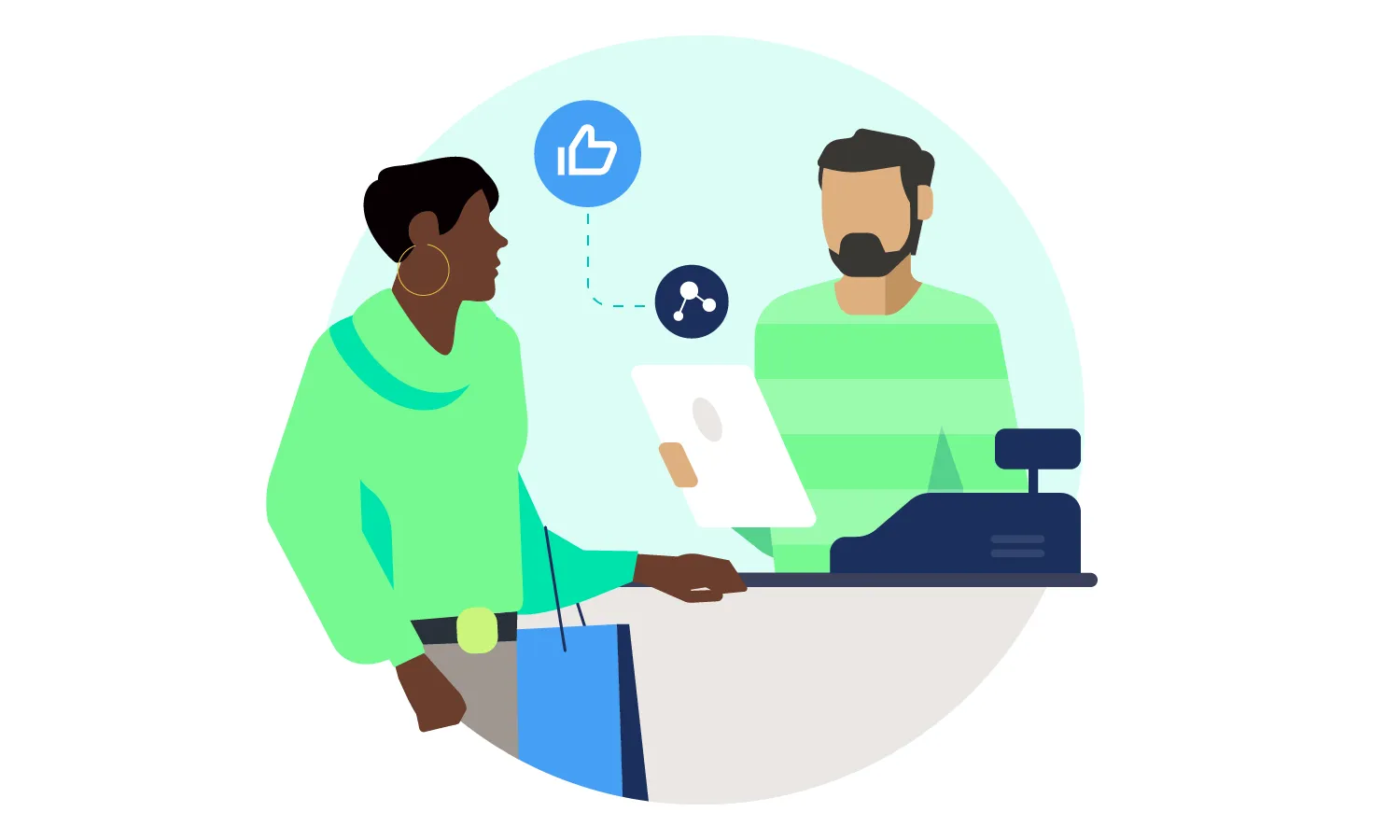June 25, 2021
How to improve the customer experience in retail stores
When was the last time a customer gave you a glowing review of their shopping experience? A remarkable customer experience plays a vital role in a business's success—because happy customers come back. Here’s how to improve the customer service in retail stores to strengthen customer loyalty and grow your business.

Brick-and-mortar retailers are facing greater and more urgent challenges than ever before.
Consumer shopping behaviors have been shaken up by the pandemic, leading to an increased willingness to try new brands and decreased customer loyalty. At the same time, ecommerce has boomed, and almost everything is available online—so brick-and-mortar retailers are competing with the fastest, most convenient shopping channels in the market.
That’s why improving the in-store customer experience should be one of your highest strategic priorities over the next 12 months. Although brick-and-mortar experiences aren’t traditionally associated with data collection, the combined and enriched data within Customer Data Platforms (CDPs) can provide unprecedented insights that help you improve the in-store experience.
In this guide, we’ll discuss:
- The definition of customer experience across channels and touchpoints.
- The importance of offering exceptional customer experiences in store.
- Tips for using data and analytics to improve the customer experience.
What is customer experience?
Customer experience refers to the total sensory, cognitive, and affective response that customers have to an interaction with a business. It’s what the consumers see, hear or experience during their interaction with your brand—matter where, how, or when that interaction occurs.
Customer experience can happen when the customer:
- Visits your website.
- Interacts with one of your employees.
- Contacts your business through phone calls, SMS, or emails.
- Browses the products on your website.
- Unpacks a shipped order.
- Reads your marketing emails.
Each interaction can create a different impression regarding your business. If the interactions across channels and touchpoints are inconsistent or disconnected, it’ll create confusion and dissatisfaction with your brand. That's why it's imperative to offer the best experience possible no matter where your customers shop.
Why is customer experience important?
Here are some of the benefits of offering a great customer experience in retail:
- Increases sales conversions: An HBR study found that the customers with the best experiences spend 140% more than those with poor experiences.
- Improves customer loyalty: The cost of acquiring a new customer is 7x more than the cost of retaining one. When you delight your customers with a great experience, you improve customer loyalty and reduce marketing costs.
- Boosts competitive edge: Every business has competitors, regardless of its niche. You can outshine your competitors by simply improving your customer experience in-store.
Here's how to improve the customer experience in retail stores
As a retail business, you should take the necessary measures to delight your customers. Here are some strategies to help you achieve the optimal customer experience:
1. Combine your customer data for a complete and accurate picture of your customers.
In order to serve your customers well, you need to first understand who they are and what they need from your brand.
That’s why today’s leading brands have combined and standardized their data into a single customer view. By bringing together all of the information you have about your customers, including their ecommerce behavior and any data you collect in-store, you can paint a complete picture of your customers and begin to identify clear, data-driven segments and personas.
These customer personas will inform your customer service in-store. With an in-depth understanding of who your best customers are and what motivates them to purchase, you can train your in-store staff to provide more impactful service.
2. Collect customer feedback through surveys and reviews.
You should have a solid customer feedback system to know if your customers are satisfied with your services and products. This feedback, whether positive or negative, can inform your approach to customer service in retail stores.
Here are some of the best ways to get your customers’ feedback:
- Conduct regular feedback surveys—you can send them via email.
- Send follow-up emails to your customers after a purchase.
- Monitor your social media accounts, especially your comment sections.
- Initiate SMS surveys.
For more information on how to collect and interpret feedback about the customer experience, click here to read “Playbook: Unpacking Customer Preferences, Behaviors, and Attitudes by Augmenting NPS Surveys.”
3. Capture in-store data for personalized retargeting across digital channels.
Traditionally, retailers have struggled to capture and access customer data in brick-and-mortar locations.
But with retail clienteling and proactive engagement tools, your in-store staff can easily access detailed customer profiles, collect data on their in-store interactions, and use the customer insights within those profiles to personalize the in-store experience.
Plus, the data you collect in-store can be used for future retargeting online, ultimately improving the customer experience across channels.
Improve your customer experience with a Customer Data Platform (CDP)
The above-discussed measures can work more effectively when you have a CDP. The software creates a persistent and unified customer base from multiple sources and combines it to make a well-structured customer profile. With these profiles, you can use advanced customer segmentation tools to gain unprecedented insight into who your customers are.
By choosing a retail clienteling solution connected to a CDP, you can gain comprehensive insights into customer behaviors and preferences, enabling you to make informed decisions about how, when, and where to engage with customers proactively. Click here to learn how to measure the impact of your customer data platform.
Lexer is the CDP of choice for leading brands like Quicksilver, Igloo, Nine West, Rip Curl, Super Goop, and more. As the only CDP built for retail, we help the world's most iconic brands drive incremental sales from improved customer engagement.
Contact us to learn more about how to improve the customer experience in retail stores with a CDP.
Speak with our retail experts

